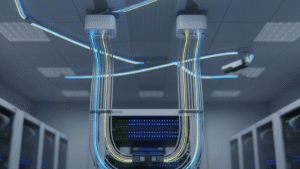As we all know, a power adapter is a critical component that connects a device to the AC power grid. Its job is to convert unstable alternating current into safe, stable direct current to power the equipment.
The importance of a stable power supply for a device — and the potential harm caused by a poor-quality adapter — cannot be overstated.
Just imagine—if an expensive piece of medical equipment suddenly encounters high voltage or insufficient current during operation, the mild result might be startup failure or frequent restarts, while the severe consequence could be irreversible circuit damage.
Now that everyone understands how important a stable power supply is for a device, the question is — just how important is it? Let’s take a closer look.
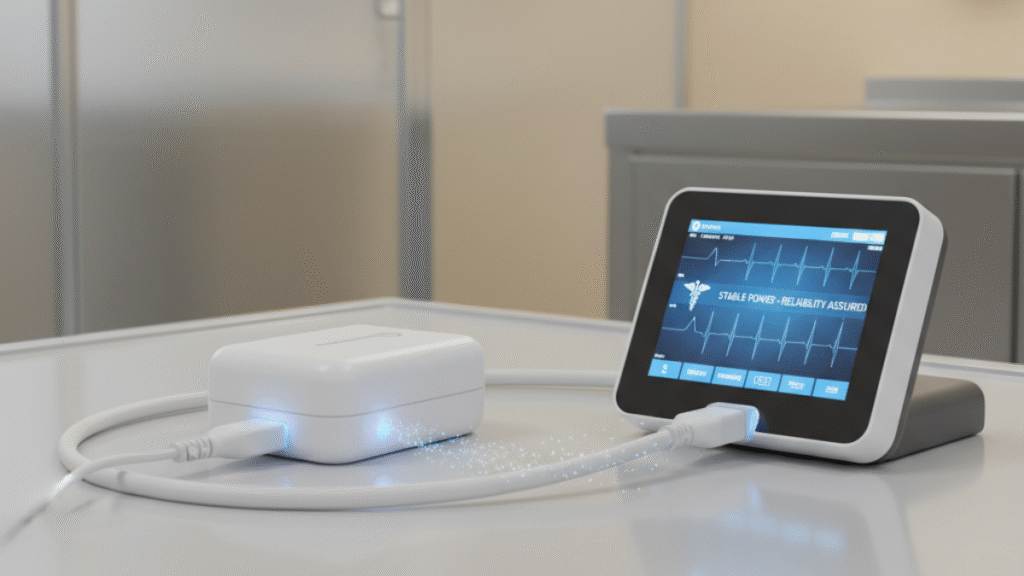
First, a device is made up of various types of precise electronic components. Among them, chips and circuit boards require constant voltage and stable current to function. If the voltage surges too high during operation — even for just a few seconds — components can easily be broken down, resulting in device damage.
Second, if the adapter does not support over-voltage and over-current protection, a sudden increase in voltage will also lead to an increase in current. This directly causes the internal wiring of the device to heat up and age. The solder joints on the circuit board can also loosen due to high temperatures, drastically shortening the overall lifespan of the equipment.
Third, low-quality adapters are prone to causing electromagnetic interference. For example, if a camera is affected by electromagnetic interference, its images may show blotches and ripples. In severe cases, there may even be screen flickering and data drifting. For devices used for recording or scanning, this kind of interference can be devastating,and that’s why they need a professional medical power adapter.
Fourth, poor-quality adapters often lack short-circuit protection. During use, it’s easy to insert the wrong plug by mistake, reverse the connection, or accidentally let the port come into contact with metal, all of which can lead to short circuits. In such cases, an adapter without short-circuit protection will continue to supply power, causing excessive current inside the power supply and generating high temperatures. This can burn the circuit or, in the worst case, start a fire. A good adapter, on the other hand, can prevent short circuits — when a short circuit occurs, a high-quality adapter will instantly enter protection mode or cut off power, avoiding serious accidents.
Finally, during thunderstorms, or when large electrical equipment is switched on in the power grid, or when the plug is first connected to power, a surge of extremely high voltage can rush into the circuit like a wave. We call this the surge phenomenon. Surges can easily damage key components such as electrolytic capacitors, MOSFETs, and IC chips. Low-quality adapters without surge protection are unable to prevent such consequences.
What determines the stability of a power adapter?
There are many factors that determine the stability of an adapter. In addition to the various protections mentioned above, the materials used in the adapter itself are also very important. The chips, electrolytics, capacitors, transformers, and IC chips inside the adapter — when their cost increases, it also means the stability of the adapter improves.
In addition, the manufacturing process of the adapter, as well as the level of mechanization and automation of the production line, can also affect its stability. For example, some manufacturers improve the potting process to enhance the heat dissipation performance of the adapter; others add cooling fans to the adapter module to assist in heat dissipation. With the help of a fan, the adapter can be designed more compactly, which allows for higher performance output in a smaller size.
A good power adapter isn’t made by labels but by its outstanding internal design. However, this doesn’t mean we should ignore the label of an adapter. Some safety standards have very high requirements for the strength of the adapter, and passing these certifications means the adapter’s performance meets the standards. For example, the UL certification in the United States requires the adapter to meet North American safety requirements in insulation, dielectric strength test, temperature rise, grounding, and fire resistance, which also ensures a certain level of stability.
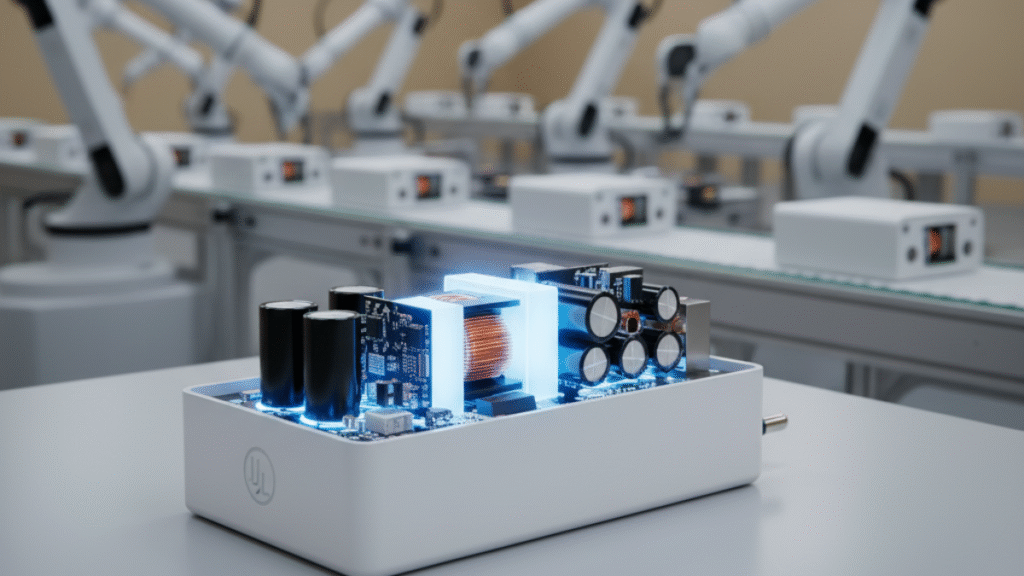
How to determine whether a power adapter is stable?
So how can you determine whether a power adapter is stable? First, check the labels and markings on the adapter before use to see which safety standards and certifications it has. Next, verify that the output power, voltage, and current match the requirements of the device you intend to connect. After connecting the device and turning on the power, observe whether there are any restarts, freezes, or unstable signals, and also pay attention to the adapter’s heat generation and noise level. If necessary, use a multimeter or a load tester to check whether the voltage remains stable. If no problems are detected in these steps, then your adapter is a stable model that can be used reliably for a long time.
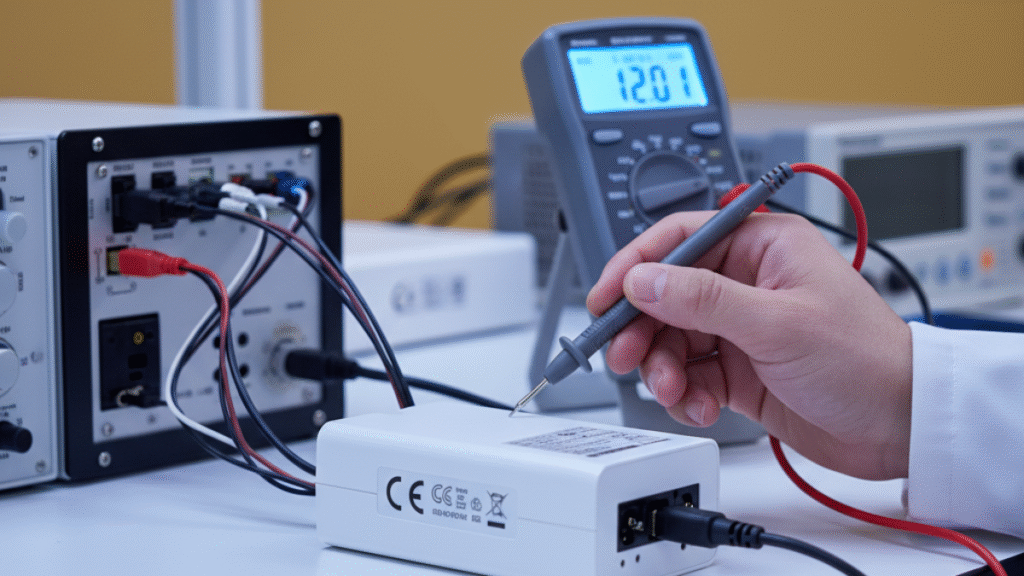
How to choose a stable power adapter
At this point, you may still have some questions. After all the background we’ve covered, how do we choose a stable adapter? The approach is similar to how we judge stability. Before purchasing, understand which certifications the manufacturer has obtained, and check whether the product’s power, voltage, and current match our device’s requirements. Buy some samples for testing before placing a mass production order. If you’re still unsure, you can visit the manufacturer’s production facility to observe the quality of materials and the production process. We have been providing stable power supply solutions for medical and industrial equipment clients, and many of them were rescued from the difficulties caused by “unstable power” through our solutions.
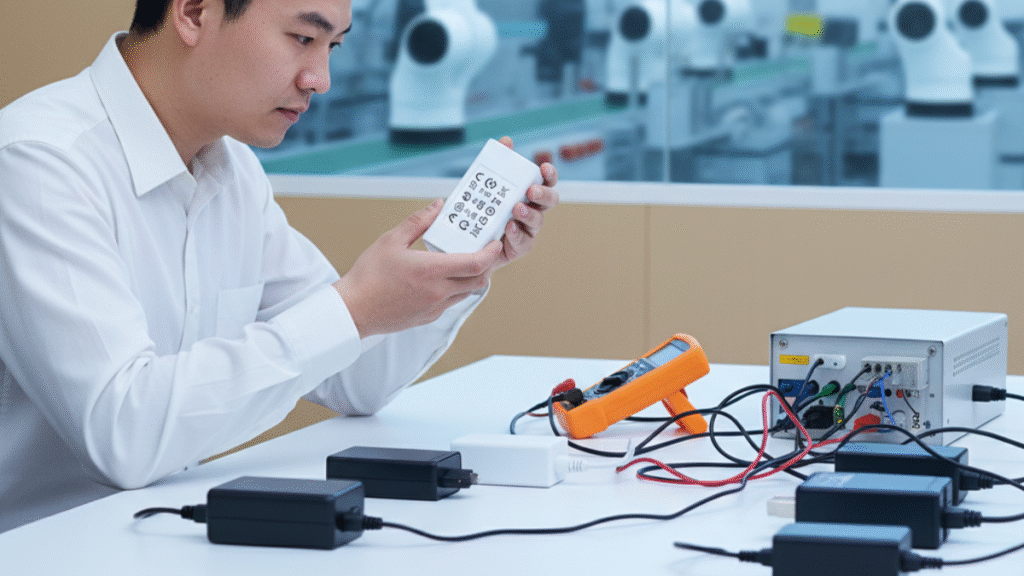
Conclusion
The adapter is not a supporting character; it is the foundation for stable operation and the cornerstone of a device’s proper functioning.
Contact us to get a more stable power supply solution.

